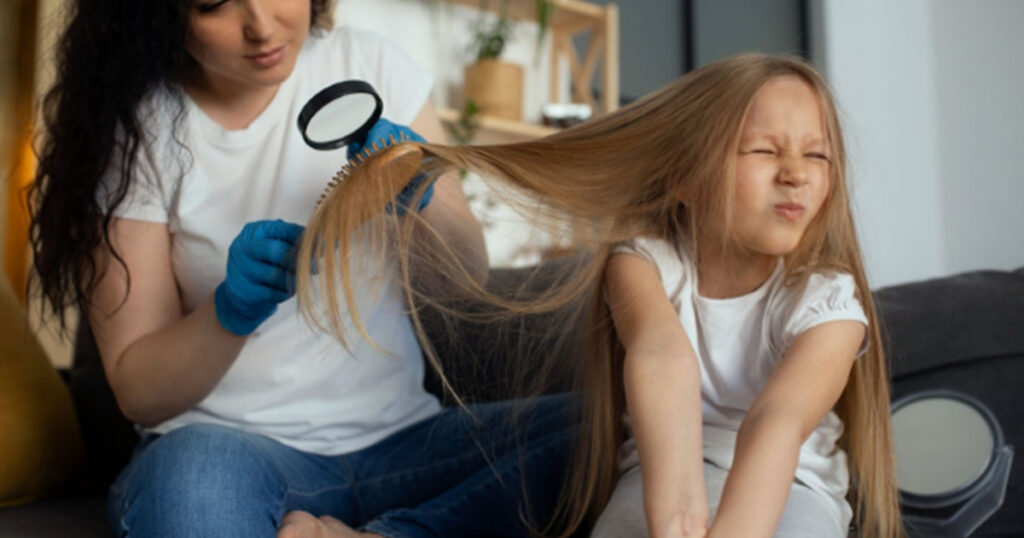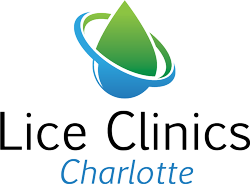How Far Can Lice Jump?

It’s a common scenario that any parent dreads: Your child comes home scratching their head incessantly and, upon closer inspection, you discover the telltale sign of lice. This is often followed by an immediate impulse to quarantine your child and commence a deep cleaning mission throughout your home. One of the most frequent questions raised by worried parents is, “How far can lice jump?” In this blog, we will dispel the myths and present the facts about the jumping abilities of lice.
Understanding Lice
Lice are a pesky nuisance to humanity but are also quite remarkable and persistent creatures. To better comprehend their behavior and capabilities, we must first understand their biology, life cycle, and feeding habits. Lice are ectoparasites, meaning they live on the outside of their host rather than inside. They are highly specialized for life on their hosts, possessing adaptations like their clawed legs for tightly gripping onto hair shafts and their slender, flat bodies for navigating through hair undetected. Lice undergo a life cycle that includes three stages: egg (nit), nymph, and adult. Female lice lay their eggs on the hair shaft close to the scalp where the temperature is perfect for keeping them warm until they hatch. After about a week, the nits hatch into nymphs, which are immature lice. Over a span of ten days, the nymphs mature into adults, which are about the size of a sesame seed. Once mature, lice feed on human blood several times a day, injecting small amounts of saliva into the scalp as they do so. It’s this saliva that many people are allergic to, causing that characteristic itchy sensation associated with lice infestations.
Debunking the Myth: Can Lice Jump or Fly?
One of the most pervasive myths about lice is their supposed ability to jump or fly. Do lice jump or fly? The answer is no. This misconception can lead to undue panic and misdirected prevention strategies. Contrary to common belief, lice cannot jump or fly. Lice are not equipped with the physical attributes needed for either jumping or flying. They do not possess wings, nor do they have the physical attributes, such as muscular hind legs, which enable other insects, like fleas, to jump. The shape and weight of a louse’s body are also factors that prevent it from jumping. They have a flattened, elongated body – an ideal shape for weaving through human hair undetected, but not for launching into the air.
Well, how do lice spread, then? The answer is short and simple: they crawl, very well and very quickly. Lice have six legs, each ending in a claw-like structure, designed to grip onto human hair shafts tightly. This grip aids in their movement, enabling them to crawl efficiently from hair strand to hair strand. Lice are agile crawlers. They crawl from one person’s hair to another’s when heads are in close contact. This is why lice infestations often occur in environments where people are in close proximity, such as schools, family homes, and sleepovers. Moreover, lice can also crawl onto personal items such as hats, scarves, hairbrushes, or headphones and then onto another person who uses these items. However, lice cannot survive for more than 48 hours without feeding on human blood, so the chance of transmission via inanimate objects is relatively low compared to direct head-to-head contact.
Precautions to Avoid Lice Infestations
Understanding that lice cannot jump or fly can help ease some anxieties and guide effective preventive measures. Here are a few strategies:
- Educate About Personal Space: Encourage your children to avoid head-to-head contact during play with other children at school, at home, and elsewhere. While it’s impossible to avoid this entirely, educating children about this can help in reducing the risk of getting head lice.
- Preventive Products: There are various lice-prevention shampoos, conditioners, and sprays available on the market that contain ingredients like tea tree oil, rosemary, and eucalyptus, which are said to repel lice. However, their effectiveness can vary, and they should not replace other preventive measures.
- Don’t share personal items: To prevent lice from crawling onto your hair via shared items, avoid using other people’s hats, scarves, hairbrushes, headphones, or other items that come into close contact with the head.
- Regularly clean items in contact with hair: Clean items that have direct contact with the head regularly. This includes items like pillowcases, hair bands, hairbrushes, and helmets. Regularly check these items for signs of lice or nits.
- Regular Cleaning of Shared Spaces: In a school or childcare setting, regularly clean shared spaces like nap mats or soft furnishings. Storing personal items separately can also help reduce the risk of lice spreading.
- Regular head checks: Perform regular head checks on your children, especially if you’ve been informed of a lice outbreak at their school or if they have been scratching their heads more than usual. Early detection can prevent the spread of lice to other family members and make treatment easier.
- Prompt treatment: If a family member is infested with lice, ensure that they are treated promptly and correctly to prevent the lice from spreading to other members of the household. If lice are detected, seek treatment promptly. Over-the-counter and prescription treatments are available in a pinch, but it is always recommended to seek professional help from a lice removal clinic.
Book An Appointment Today At The Charlotte Lice Treatment Clinic!
Now that we know for certain that head lice cannot jump or fly, it is still important to understand that they are still able to multiply and spread to others rapidly. If you’ve been exposed to someone with head lice, or are experiencing the signs of a head lice infestation, do not hesitate to reach out to a professional lice removal clinic. Lice Clinics Charlotte applies the use of our proprietary Airtral treatment, which guarantees 100% lice removal without the use of toxins or harsh chemicals. For more information about our treatment options, please visit our website or give us a call at (910)-264-7141.
